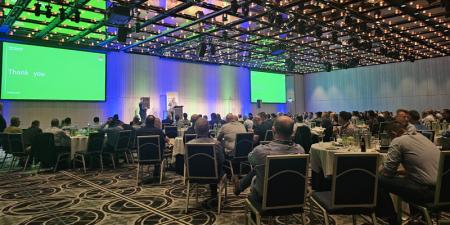The NSW Government has taken a major step towards unlocking critical minerals and high-tech metals with a new mapping exercise of the state’s landmass, including investigations up to 50km below the surface.
Critical minerals and high-tech metals – such as copper and nickel – are key components in solar panels, EV batteries, wind turbines and other products. These metals are crucial to the energy transition to help put downwards pressure on both emissions and power prices.
The demand for critical minerals from clean energy technologies alone – including many of those minerals found in NSW – will surpass $400 billion annually by 2050, according to the International Energy Agency.
Geospatial survey data is crucial in assisting minerals explorers to target their searches for potentially rich deposits of critical minerals and high-tech deposits.
The data is free and publicly available and represents a significant milestone in enhancing the understanding of the state’s geology. It will play a key role in unlocking new mining projects for decades into the future.
The geophysical survey campaign covered over one-sixth of the state. The survey data includes data captured across more than 148,000 square kilometres.
More than 8 aircraft over 18 months were used to collect the data. This included using sound waves to delve up to 50 kilometres beneath the surface.
NSW will play a leading role in the future of natural resources in Australia, with:
- Deposits of 21 of the 31 nationally identified critical minerals, and
- Deposits or occurrences of all five minerals on the Commonwealth Government’s Strategic Minerals List.
Currently, there are more than 2,600 people directly employed in critical minerals and high-tech metals mines in the Central West of NSW, and another 1,260 in the Far West. A further 1,600 people are projected to be employed if currently proposed projects begin mining.
It deployed a comprehensive suite of cutting-edge survey methods, including airborne electromagnetic (AEM), airborne magnetic and radiometric (AMR), gravity, and deep crustal reflection seismic surveys to collect the data.
The NSW Government is currently reviewing its Critical Minerals and High-Tech Metals Strategy to best position the state to take advantage of the opportunities these resources provide to the future of employment, industry and the net zero transition.
The NSW Government has invested $7.7 million in the geophysical acquisition campaign.
Key highlights include:
- The Forbes to Dubbo AEM Survey will unearth invaluable insights into the geological characteristics of the area.
- The Cobar to Yathong Seismic Survey used sound waves to delve deep beneath the surface, the Cobar to Yathong area, reached depths of up to 50 kilometres within the Yathong–Ivanhoe Trough and Cobar Basin, from south of Cobar to Nyngan. This seismic survey will unveil crucial information about the geological structures present in the region including data on critical minerals used in advanced manufacturing.
- The Yathong AEM and AMR Surveys were instrumental in mapping the geology of this area. Essential data is available for mineral exploration and resource assessment.
These surveys map large areas of land with minimal disruption to the environment, to help better understand geology and possibly uncover groundwater aquifers.
Gathering survey data is non-invasive and uses seismic tools and aircraft to gather the data with minimal impact on regional communities.
The surveys were conducted in collaboration with Geoscience Australia and represent a significant milestone in enhancing the understanding of the state’s geological composition and structure.
The data can also be used by water resources scientists to investigate groundwater. While groundwater traditionally comes from river floodplains and springs, researchers have been looking for more water resources in aquifers or reservoirs with the aim of supporting regional communities.
The acquired data is now available in MinView which also contains all available public data in NSW, offering geoscientists, governments, explorers, and farmers a wealth of information to facilitate informed decision-making.
For more information visit our Recent Activities web page.


